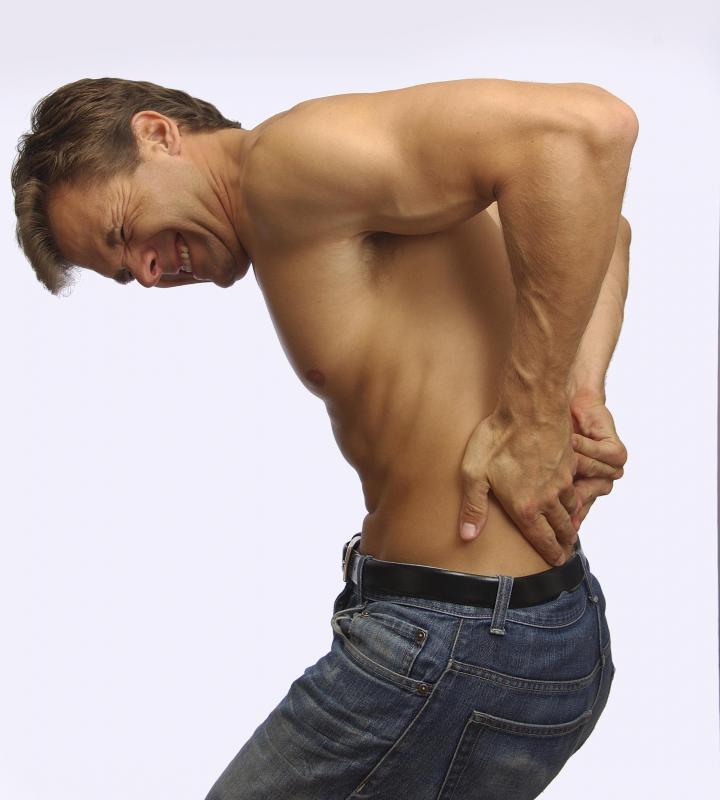At WiseGEEK, we're committed to delivering accurate, trustworthy information. Our expert-authored content is rigorously fact-checked and sourced from credible authorities. Discover how we uphold the highest standards in providing you with reliable knowledge.
What are the Different Types of Spinal Decompression Machines?
A spinal decompression machine stretches the spine. It might be a portable device for treatment at home or a complex, computer-operated machine providing treatment in a practitioner’s office. Spinal decompression machines treat bulging discs, spinal stenosis, and other conditions that cause back pain. Health care providers often combine decompression therapy with other forms of treatment and patient stretching exercises.
Inversion therapy tables are a type of spinal decompression machine that an individual can use in the privacy of his home. A person usually stands on pedals while his feet are held in place by rollers positioned at ankle level. The individual then tilts the table at varying degrees, with a full tilt turning the person upside down. Many tables have up to four different locking positions. Inversion tables stretch the entire spine by using gravity, which causes negative pressure on discs, encouraging reinflation and hydration.

Therapists suggest using an inversion table for three to five minutes per session. Adverse effects include dizziness and lightheadedness, even with only a few minutes of therapy. These spinal decompression machines are usually not recommended for people with hypertension, as the increased pressure may cause ruptures in fragile blood vessels. Individuals having medical conditions which prevent the use of inversion tables might opt for floor-based devices.

Some spinal decompression machines sit on the floor, allowing users to kneel in front of a frame, grip a pair of handle bars, and lean forward with the torso supported from underneath. This kind of device provides spinal stretching from the shoulder blades down to the pelvis, but does not traction to the neck region. Another floor-based spinal stretching device involves applying a waist belt attached to a tail, which is secured behind a door. The patient then lies on his back with knees bent and feet on the floor. A handle on the machine, located on the tail and positioned between the legs uses a ratcheting motion to increase tension supplied by the tail which applies spinal traction.

Professional, computer-operated spinal decompression machines are typically used by trained health-care providers. The patient lies on a padded table while wearing chest and pelvic harnesses that are attached to the end of the table. Using the computer console, the physician programs the machine to apply cycles of tension and release. This method of treating protruding-disc-related chronic back pain is generally accompanied by hot/cold therapy or electric stimulation before, during and after traction application.
AS FEATURED ON:
AS FEATURED ON:
















Discuss this Article
Post your comments